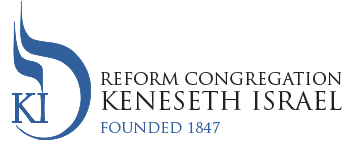This Shabbat, we begin the reading of the fourth book of the Torah, the Book of Numbers. In Hebrew, the book is called B’Midbar/In The Wilderness. Both the English and Hebrew names of the fourth Torah book teach us about the character and contents of this volume. The English name, Numbers, describes the many lists of the tribes, their leaders, their sacrificial offerings, the marching orders, and even their captured booty. The Hebrew name, “B’Midbar/In the Wilderness,” sets the location and stage for the coming extended period of 38 years of wandering through the desert as described in 36 chapters. The chronological history of the Israelites continues where the narrative had stopped at the end of the book of Exodus. (Leviticus, the intervening book, is a listing of diverse legislation, ritual and ethical, and sacrifices to be performed by Aaron and his sons in the desert, and lists of the holidays to be celebrated by the Israelites.)
At the beginning of the fourth book, G-d Almighty commanded Moses to take a census of the “whole Israelite company….” (1:2) The purpose of this census was to ascertain how many men were available to serve as soldiers to defend the Israelites as they walked through the Sinai desert. Moses counted 603,550 men of draft age (20 to 60 years); the tribe of Levi, numbering 22,300 males age one month and older, was counted separately. The Levites were serving in the Mishkan/Sanctuary. They replaced the firstborn, since they were disqualified when they participated in the blasphemous worship of the Golden Calf.
In the Plaut Bible, page 898, there is a drawing of the order of march of the tribes as they began their almost four-decade journey to the Promised Land. All the tribes surrounded the Mishkan/Tabernacle. In the front of the formation were the tribes of Issachar, Judah, and Zebulun, followed by Moses, Aaron, and his priests/sons. Surrounding the heavy accoutrements of the Tabernacle components were the other tribes, distributed on the other two sides. Behind the Mishkan were the tribes of Manasseh, Ephraim, and Benjamin.
After the results of the census were tallied, a highly detailed procedure for covering and securing all the ritual objects during the march was enumerated. Only Aaron and his sons were permitted to approach the most sacred objects!
The given results of the census would indicate that the procession of the tribes and their sacrificial equipment would have occupied a huge area! This hinges on our understanding of the Hebrew word, ELEF. In modern Hebrew, ELEF means 1000. It is possible that the term in Biblical language means a smaller number of men, each time this term is utilized. If so, the needed area would be a more manageable size.
This portion teaches us about the rights and responsibilities of the first born males. “For every male first born is Mine; as the time that I smote every male first born in the land of Egypt, I consecrated every male first-born in Israel, human and beast, to Myself, to be Mine, the Eternal’s. (3:13)
Some of us might remember a Jewish practice called Pidyon HaBen/Redemption of the First Born. Today, families elect to participate in this festive ceremony 30 days after the birth of a first born male child. This ceremony is derived from the above verse in this week’s portion!
In our day, Rabbi David and the religious staff, and Brian Rissinger and the professional staff, are totally dependent on meticulous counting of the synagogue membership and obtaining the resources in order for us to complete business interactions and provide the necessary supplies and services for our complex operation. Just as Aaron and his sons took exquisite care of the ritual equipment each and every time that the procession moved to a new camp, so do our Rabbi, Cantor, organist, executive director, maintenance personnel and staff take exquisite care of our two sanctuaries, our Torah scrolls, their covers and associated jewelry, Torah pointers, crowns, and breast plates, prayer books, and essential audio equipment. In recent years, video projectors and screens have been added to our sanctuaries, and we must take meticulous care of them, just the way Aaron and his family took care of the equipment in the Mishkan as described in this week’s Torah portion. This portion teaches us to count all the members of our KI community, and to view with great care all of this essential material which we need for our religious life in 2023/5783, and beyond.
Ellen and I wish you Shabbat Shalom U’m’vorach.
